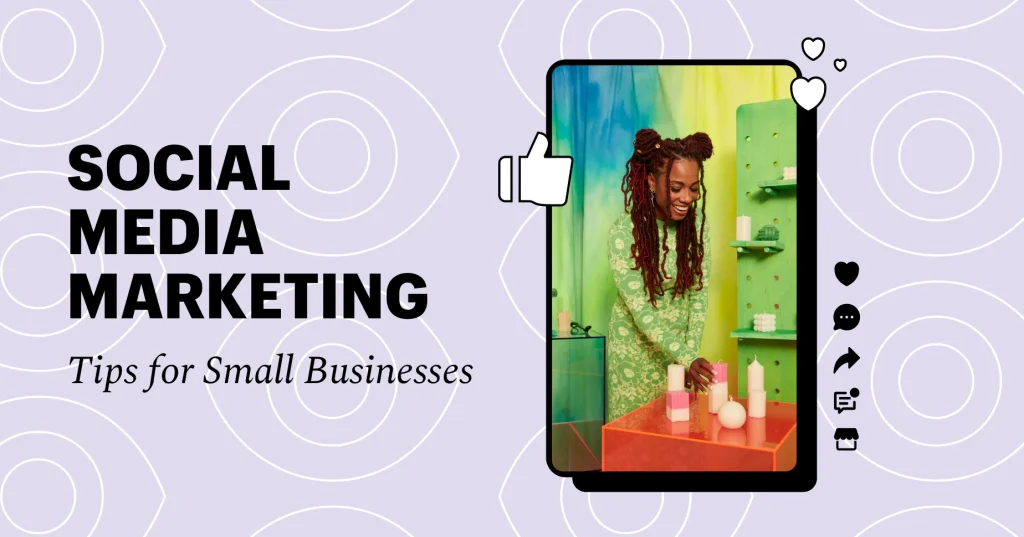Social Media Marketing - How to Effectively Use Social Media for Business Marketing?
Social media can be a powerful tool for capturing the attention of potential customers. With billions of users worldwide, social media platforms offer businesses a huge audience to reach out to. To capture the attention of your target audience on social media marketing, you need to create compelling content that stands out from the crowd. This could include eye-catching images or videos, attention-grabbing headlines, or interactive content that engages your audience.
Once you’ve captured the attention of your target audience, the next step is to generate interest in your business or brand. You can do this by showcasing the unique value proposition of your products or services, highlighting the benefits that they offer, and sharing customer success stories. You could also run promotions or contests to encourage engagement and generate interest in your business.
To convert your social media followers into customers, you need to create a desire for your products or services. This could involve creating targeted ads or social media posts that highlight the benefits of your products or services, offering exclusive discounts or deals to your social media followers, or using social proof to build credibility and trust with your audience.
Finally, you need to encourage your social media followers to take action and become customers. This could involve including clear calls to action in your social media posts or ads, directing followers to a landing page where they can make a purchase or sign up for a newsletter, or using retargeting ads to reach out to users who have previously interacted with your business on social media.
Social media has become an essential tool for businesses of all sizes to reach their target audience and promote their products or services. However, with so many different platforms and strategies available, it can be overwhelming to figure out how to effectively use social media for business marketing.

In this blog post, we will provide tips and strategies to help you make the most out of your social media marketing efforts.
1. Define Your Target Audience:
The first step to effective social media marketing is to define your target audience. Who are you trying to reach? What are their interests, pain points, and motivations? Once you have a clear understanding of your target audience, you can tailor your content and messaging to better resonate with them.
2. Choose the Right Platforms:
Not all social media platforms are created equal. Different platforms have different demographics, user behaviours, and content formats. For example, Instagram is great for visual content and targeting younger audiences, while LinkedIn is better for professional networking and B2B marketing. Choose the platforms that align with your target audience and business goals.
3. Create High-Quality Content:
Your social media content should be visually appealing, informative, and engaging. Avoid overly promotional content and focus on providing value to your followers. Use high-quality images and videos, and vary your content format to keep things interesting.
4. Engage with Your Followers:
Social media is a two-way conversation. Make sure to engage with your followers by responding to comments, messages, and mentions. Ask for feedback, run polls, and host Q&A sessions to encourage dialogue and build relationships with your audience.
5. Use Paid Advertising:
While organic reach on social media has declined in recent years, paid advertising can help you reach a wider audience and drive conversions. Use targeted ads to reach your specific audience, and track your results to optimize your campaigns over time.
6. Use Hashtags:
Hashtags are a powerful tool for increasing the visibility of your social media posts. Research relevant hashtags in your industry or niche, and use them in your posts to reach a wider audience. You can also create branded hashtags to promote your business and encourage user-generated content.

7. Monitor Your Analytics:
Tracking your social media analytics can provide valuable insights into your audience, content performance, and overall social media strategy. Use analytics tools provided by each social media platform, or use third-party analytics tools to track metrics like engagement, reach, and conversions.
8. Collaborate with Influencers:
Partnering with influencers in your industry or niche can help you reach a wider audience and build credibility for your brand. Identify influencers who align with your values and target audience, and collaborate with them on content or campaigns.
9. Use Social Media for Customer Service:
Social media is an increasingly popular channel for customer service. Use social media to respond to customer inquiries, resolve issues, and provide support. This can help you build a positive reputation for your brand and improve customer satisfaction.
10. Stay Up-to-Date with Trends:
Social media trends are constantly evolving, so it’s important to stay up-to-date with the latest developments. Follow industry thought leaders, attend webinars and conferences and stay abreast of new features and updates from each social media platform. This will help you stay ahead of the curve and make the most out of your social media marketing efforts.
Businesses can effectively leverage social media for marketing and drive conversions from their social media followers.
You may also like:

Top 10 Hidden Smartphone Features You’re Not Using (But Should Be) – Boost Your Mobile Experience Today
Top 10 Hidden Smartphone Features You’re Not Using (But Should Be) – Boost Your Mobile Experience Today

Top 10 Tips of Pro level smartphone photography : Turn Your Smartphone Into a Pro Camera
Top 10 Tips of Pro level smartphone photography : Turn Your Smartphone Into a Pro Camera

The 10 Common Behaviors That Damage Your Phone
The 10 Common Behaviors That Damage Your Phone
